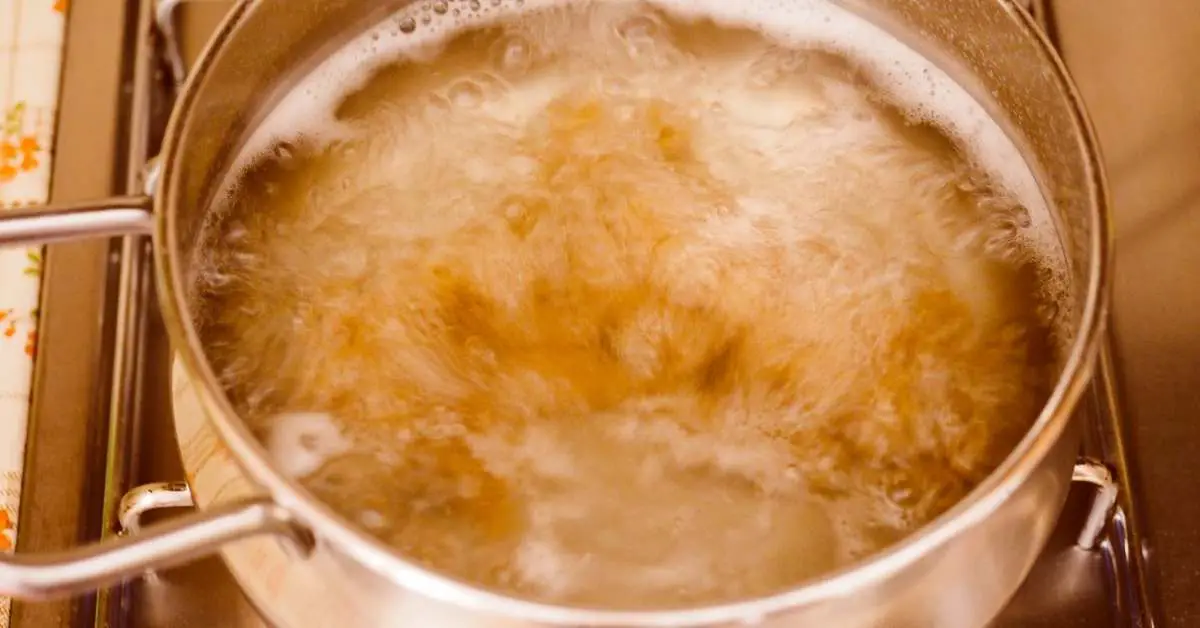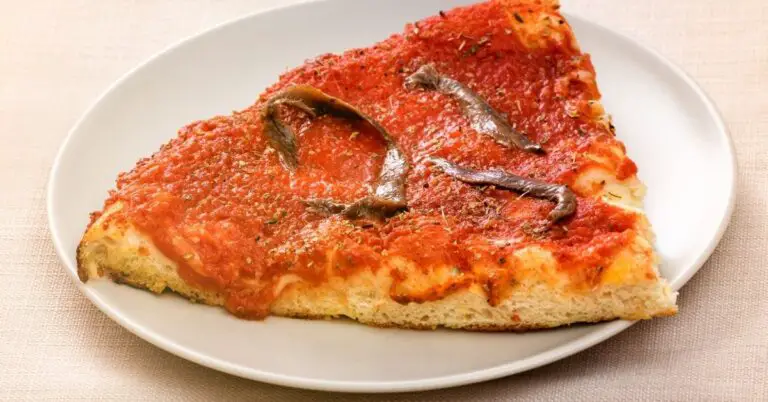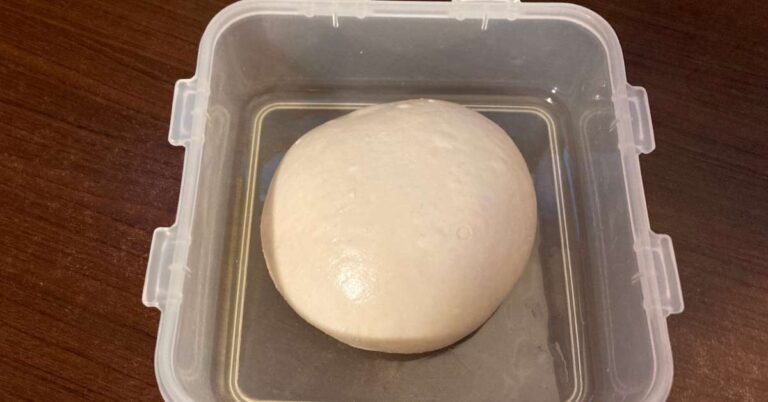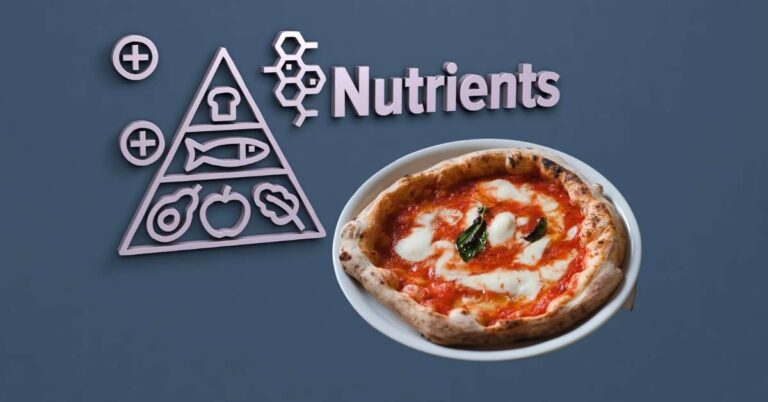Can I Freeze Spaghetti? How To Get The Most From Your Leftover Pasta
I’m a big fan of spaghetti – as should be no surprise for the founder of a website dedicated to pizza. But sometimes I cook too much spaghetti and have leftovers. Do you think I throw all that perfectly good pasta away? Of course not!
Spaghetti can be frozen and recooked very easily. Simply mix the cooled leftover spaghetti with a tablespoon of olive oil and freeze it in a plastic bag or reusable container. When you’re ready to eat it, let the spaghetti thaw at room temperature for 1-2 hours then drop it in boiling water for about 60 seconds.
Alternatively, you can recook frozen spaghetti in the microwave at medium power for about 3 minutes, or until the pasta is hot. This is ideal if the spaghetti already has been mixed with sauce or toppings.
Remember – each time you recook frozen spaghetti, it will become more well done than when it was first cooked. This means you should only freeze spaghetti that was cooked to al dente or you risk turning your pasta into mush.

Does Spaghetti Freeze Well?
Not all foods do well after being frozen but fortunately spaghetti, and most other kinds of pasta, does very well when frozen and reheated. This assumes, however, that you’ve taken a few steps beforehand to make sure the freezing and thawing process goes smoothly.
Keep It Al Dente
Something to remember about reheating spaghetti is that each time you recook it, it will become slightly more well done than the time before. So, if you’re someone who likes your spaghetti slightly more well done than al dente, freezing might not be a good option for you because reheating it will make it mushy.
This is why I only recommend freezing spaghetti, or any other kind of pasta, when it’s been cooked just to al dente. Anything more than this, in my opinion, is better off just throwing away.
What does al dente mean? Al dente literally translates to “to the tooth” from Italian. Pasta that’s been cooked “al dente” has a slight firmness to it when chewed as opposed to being soft and mushy. Al dente is the preferred level of doneness for cooking most kinds of pasta.
Add Olive Oil To Prevent Sticking
When spaghetti cools, it has a tendency of sticking together in a clumpy mess. To avoid this, I always mix my leftover pasta with a tablespoon of olive oil to prevent it all from sticking together when it’s reheated.
If your spaghetti is already mixed with a sauce, it won’t be as much of a problem since the sauce most likely contains some kind of oil anyways. However, if you find it’s still sticking together, it won’t hurt to mix in a bit of olive oil before freezing it.
Why Freeze Spaghetti?
- The best reason to freeze spaghetti is to avoid food waste, especially when reheated spaghetti can, in theory, be just as good as when it’s cooked fresh.
- Another good reason to freeze spaghetti is to save time cooking future meals by preparing a large amount of it in batches. This is a great option for those with kids or busy work schedules who don’t have time to cook a meal from scratch each night.
- Many people freeze spaghetti in batches to take with them to work each day for lunch. Simply cook the spaghetti and mix it with your favorite sauce or toppings, let it cool, place it in a plastic container and freeze. You don’t even have to thaw it in advance, just take it with you frozen and by the time lunch rolls around it will be ready to pop in the microwave.
Can You Freeze Spaghetti With Sauce
You can freeze spaghetti with sauce as easily as you can freeze spaghetti without sauce.
To freeze spaghetti with sauce, you can follow the same process as you would plain spaghetti or pasta.
First, allow your spaghetti and sauce to cool to room temperature. When the spaghetti has stopped steaming, you can place it in the plastic container or sealable plastic bag and put it in the freezer.
If your spaghetti is sticking together when cooled, mix it with some olive oil first before freezing it. This will give you much better results when you reheat the spaghetti on the stove or in the microwave.
How To Freeze Spaghetti (And Reheat It Again)
Freezing spaghetti is simple, as long as you take a few precautions and follow these steps.
Cook The Spaghetti

Cook your spaghetti as you would normally, but make sure that the pasta doesn’t go past the al dente level. Al dente spaghetti should have a slight firmness when you bite into it. That doesn’t mean the pasta should be chewy, per se, but it shouldn’t melt in your mouth like mush either.
Tip: To check if your spaghetti is cooked al dente, bite into a piece and look at the cross section. Al dente spaghetti usually has a very small, barely visible core in the center. This means the spaghetti has not been cooked entirely the way through (which means it’s overdone).
Let The Spaghetti Cool

If you know you’re going to be freezing your spaghetti before hand, don’t throw it in a bag or a container while it’s still steaming because this will add too much water when it freezes and turn it into a block of ice.
Mix The Spaghetti With Olive Oil

When spaghetti dries, the noodles have a tendency of sticking together into one big messy clump. To avoid this, mix the spaghetti with approximately 1 tablespoon of olive oil before freezing it.
Tip: If you’re freezing spaghetti with sauce, you can still add olive oil to prevent sticking. However, if your sauce already has oil you might not need to – feel free to use your best judgment.
Freeze The Spaghetti

Place your cooled and oiled spaghetti into a reusable plastic container or a sealable plastic bag and let it freeze completely.
Thaw The Frozen Spaghetti

When you’re ready to use your frozen spaghetti again, take it out of the freezer and let it thaw. If it’s the night before, place it in the freezer, or if it’s for the same day just place it on the counter at room temperature. When the spaghetti is fully thawed, it’s ready to be reheated.
Reheat Thawed Spaghetti

The simplest way to reheat frozen spaghetti is to cook it (thawed) in the microwave at medium power for 3-5 minutes. Make sure not to overcook the spaghetti as it will quickly turn to mush in the microwave. Alternatively, you can drop it in some boiling water for around 60 seconds – just long enough to heat it up, but again, not long enough to turn it into mush.
Tip: When the spaghetti is warm enough to eat, it’s done. It doesn’t need to be steaming hot when reheated.
Result

If all goes well, you should have a nearly good as fresh serving (or two) of previously frozen spaghetti. If you haven’t added sauce yet, you can do it now. If it was frozen with sauce and toppings already added, you’re ready to go. I like to add a bit of cracked pepper on top to give it the feel and flavor of freshly made spaghetti.
Related Posts:
- What Is The Difference Between Pizza Sauce & Spaghetti Sauce? The Simple Answer
- Can Pizza Dough Be Frozen? How To Freeze Pizza Dough
- How To Defrost Pizza Dough – From Frozen To Edible Fast
Related Questions:
Can You Freeze Spaghetti With Sauce On It?
Spaghetti can be frozen with sauce on it without any problem, especially if the sauce is made from tomatoes. Other kinds of sauces, such as those made from dairy, might not hold up as well during the freezing process. In either case, the best advice is to experiment and see how you like your favorite sauce after being frozen.
What Is The Best Way To Freeze Spaghetti?
The best way to freeze spaghetti is to mix it with olive oil (to avoid sticking) then let it cool until all of the steam has finished evaporating. Then, place the spaghetti in a reusable container and put it in the freezer until you’re ready to use it. The frozen spaghetti can be thawed at room temperature for a 1-3 hours then reheated and served.
How Do You Freeze Spaghetti With Meat Sauce?
To freeze spaghetti with meat sauce first let it cool until it reaches room temperature. Then, place the spaghetti with meat sauce in a plastic bag or container and freeze it until you’re ready to thaw and reheat it again. If the spaghetti is sticking together, be sure to mix in some olive oil before freezing to avoid a clumpy mess.
What Is The Best Container To Freeze Spaghetti Sauce?
A sealable plastic bag or reusable container with a lid is the best way to store frozen spaghetti sauce. I like to store my frozen spaghetti sauce in tinted mason jars that block light and avoid spoiling.
How Long Can You Freeze Spaghetti?
Frozen spaghetti has a relatively long shelf-life and will last up to 3-4 months in the freezer. When you’re ready to eat the spaghetti, simply let it thaw at room temperature and reheat it in the microwave or boiling water if it’s plain.






